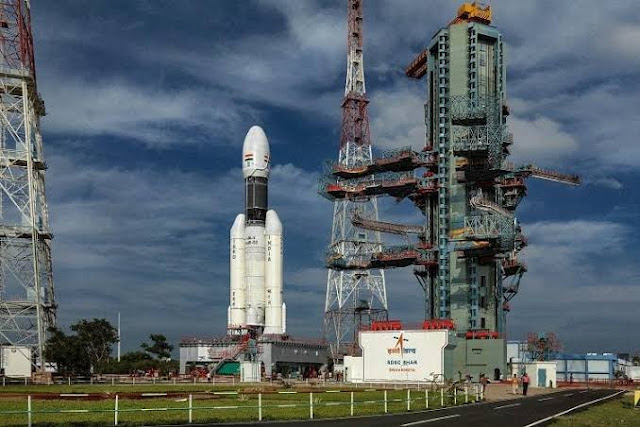GSAT-29: Eye on moon, ISRO takes a leap with heaviest satellite
- The ISRO launched its heaviest satellite GSAT-29 weighing 3423 kg onboard GSLV Mk III, India’s Fatboy, into a Geosynchronous Transfer Orbit from the Satish Dhawan Space Centre at Sriharikota.
Highlights
- This is the second developmental flight of GSLV Mk III.
- GSLV Mk III carried GSAT-29, a communication satellite weighing 3423 kg into Geostationary Transfer Orbit about 35000 km above the surface of the earth.
- GSAT-29 will provide communication services to the northeast and Jammu and Kashmir using Ka/Ku-band high throughput communication transponders.
- Further it also carried Q/V-band payload useful for data transmission through optical communication link.
GSLV Mk-III
- Popularly called as ISRO’s ‘Fatboy’, GSLV Mk-III is a three-stage heavy-lift rocket with an indigenous cryogenic engine in the third stage.
- GSLV Mk III rocket can carry satellites weighing more than four tonnes to Geosynchronous Transfer Orbit (GTO) or satellites weighing about 10,000 kg to a Low Earth Orbit (LEO).
- Cryogenic stage is an efficient rocket stage that provides more thrust for every kg of propellant it burns.
- Nearly 50% of the power for GSLV rockets comes from the cryogenic stage.
Cryogenic Engine
- The cryogenic upper stage in the GSLV Mk III rocket is called the C25 engine carrying 27 tonnes of fuel.
- The C25 cryogenic engine uses liquid hydrogen as fuel and liquid oxygen as oxidizer at extremely low temperatures.
- While the temperature of the fuel liquid hydrogen is maintained at -253°C, liquid oxygen is kept at -193°C.
How does it produce higher thrust?
- Hydrogen liquefies at extremely low temperatures at minus 253 degree centigrade.
- The reason to use liquid hydrogen is that even when it liquefies, it has a very low density of 0.071 gm/cc.
- Due to low density per gram liquid hydrogen contains more than double the energy of that of gasoline.
- Therefore it provides more thrust for every kg of propellant it burns compared to solid and earth-storable liquid propellant stages.
- As a result engines operating with cryogenic technology can lift heavier satellites.
Cryogenic technology in India
- India is the 6th country after US, Russia, France, Japan and China to possess cryogenic engine technology.
- India in 1992 had a two-pronged strategy of purchasing cryogenic engines from Russia, and acquiring the technology from the US.
- But following the 1998 nuclear tests and the sanctions that followed, the US denied India cryogenic technology.
- ISRO used seven cryogenic engines sold by Russia for the early phase of its GSLV programme that began in 2001, while simultaneously developing an indigenous technology.
Status
- In 2014, ISRO successfully tested an experimental flight of GSLX Mk-III
- In June 2017, ISRO successfully launched the first “developmental” flight of GSLV Mk-III carrying GSAT-19 satellite into space.
- In June 2018, the government approved Rs 4,338.2 crore for the next 10 flights of GSLV Mk-III.
- The GSLV Mk III rocket is also designated as the launch vehicle for India’s second moon mission Chandrayaan 2 which is scheduled for January 2019.
- Further India’s first human space flight Gaganyaan to be launched in 2022 will also use GSLV Mk-III.










No comments
Welcome to the world of the seekers